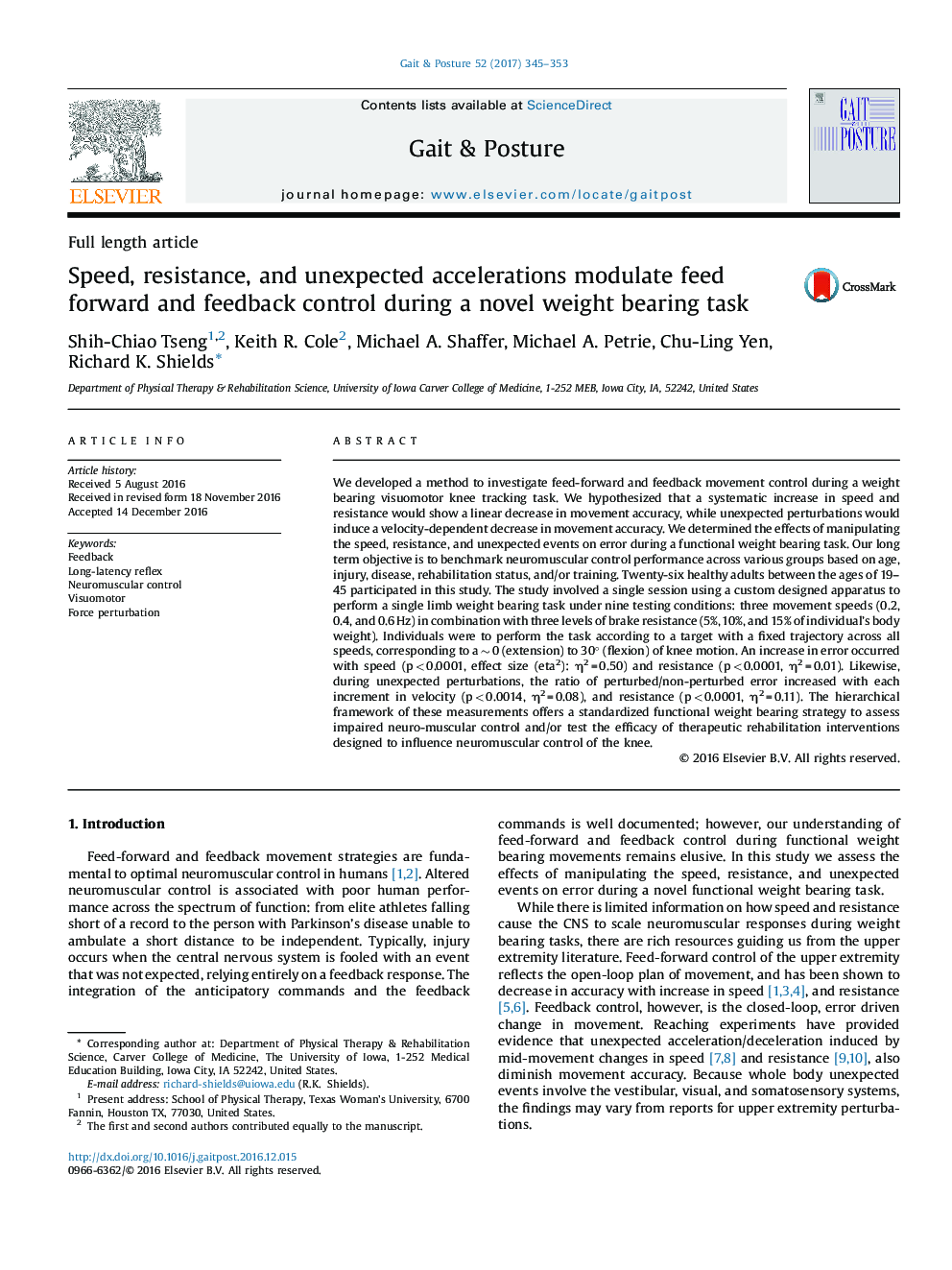| کد مقاله | کد نشریه | سال انتشار | مقاله انگلیسی | نسخه تمام متن |
|---|---|---|---|---|
| 5707565 | 1603843 | 2017 | 9 صفحه PDF | دانلود رایگان |
عنوان انگلیسی مقاله ISI
Speed, resistance, and unexpected accelerations modulate feed forward and feedback control during a novel weight bearing task
ترجمه فارسی عنوان
سرعت، مقاومت و شتاب های غیر منتظره، تغذیه جلو و کنترل بازخورد را در طی یک کار تحمل بار وزن جدید تعدیل می کنند
دانلود مقاله + سفارش ترجمه
دانلود مقاله ISI انگلیسی
رایگان برای ایرانیان
کلمات کلیدی
موضوعات مرتبط
علوم پزشکی و سلامت
پزشکی و دندانپزشکی
ارتوپدی، پزشکی ورزشی و توانبخشی
چکیده انگلیسی
We developed a method to investigate feed-forward and feedback movement control during a weight bearing visuomotor knee tracking task. We hypothesized that a systematic increase in speed and resistance would show a linear decrease in movement accuracy, while unexpected perturbations would induce a velocity-dependent decrease in movement accuracy. We determined the effects of manipulating the speed, resistance, and unexpected events on error during a functional weight bearing task. Our long term objective is to benchmark neuromuscular control performance across various groups based on age, injury, disease, rehabilitation status, and/or training. Twenty-six healthy adults between the ages of 19-45 participated in this study. The study involved a single session using a custom designed apparatus to perform a single limb weight bearing task under nine testing conditions: three movement speeds (0.2, 0.4, and 0.6 Hz) in combination with three levels of brake resistance (5%, 10%, and 15% of individual's body weight). Individuals were to perform the task according to a target with a fixed trajectory across all speeds, corresponding to a â¼Â 0 (extension) to 30° (flexion) of knee motion. An increase in error occurred with speed (p < 0.0001, effect size (eta2): η2 = 0.50) and resistance (p < 0.0001, η2 = 0.01). Likewise, during unexpected perturbations, the ratio of perturbed/non-perturbed error increased with each increment in velocity (p < 0.0014, η2 = 0.08), and resistance (p < 0.0001, η2 = 0.11). The hierarchical framework of these measurements offers a standardized functional weight bearing strategy to assess impaired neuro-muscular control and/or test the efficacy of therapeutic rehabilitation interventions designed to influence neuromuscular control of the knee.
ناشر
Database: Elsevier - ScienceDirect (ساینس دایرکت)
Journal: Gait & Posture - Volume 52, February 2017, Pages 345-353
Journal: Gait & Posture - Volume 52, February 2017, Pages 345-353
نویسندگان
Shih-Chiao Tseng, Keith R. Cole, Michael A. Shaffer, Michael A. Petrie, Chu-Ling Yen, Richard K. Shields,
